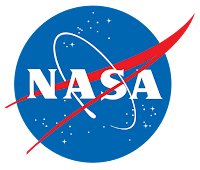NASA logo.
Aug. 5, 2019
On June 21, 2019, NASA demonstrated the first coordinated maneuver between two CubeSats in low-Earth orbit as part of NASA’s Optical Communications and Sensor Demonstration mission.
The twin spacecraft, each approximately the size of a tissue box, were orbiting Earth about 5.5 miles apart when they established a radio frequency communications cross-link to “talk” with each other. One spacecraft issued a command to the second to activate its thruster and close the gap between the two. The fuel tanks on both spacecraft are filled with water. During this propulsive maneuver, the water was converted to steam by the thrusters to propel the spacecraft.
«Demonstrations such as this will help advance technologies that will allow for greater and more extended use of small spacecraft in and beyond Earth-orbit,» said Roger Hunter, program manager of the Small Spacecraft Technology program.
Video above: This unnarrated animation depicts NASA’s first coordinated maneuver between two CubeSats in low-Earth orbit as part of NASA’s Optical Communications and Sensor Demonstration mission. Video Credit: NASA.
The demonstration was designed with a series of safeguards to ensure that only a pre-planned and authorized maneuver could take place. While it was choreographed by human operators on the ground, the demonstration shows it is possible for a series of propulsive maneuvers to be planned with onboard processing and executed cooperatively by a group of small spacecraft.
«The OCSD team is very pleased to continue demonstrating new technical capabilities as part of this extended mission, over 1.5 years after deployment,» said Darren Rowen, director of the Small Satellite Department at The Aerospace Corporation. «It is exciting to think about the possibilities enabled with respect to deep space, autonomously organizing swarms of small spacecraft.»
Three OCSD spacecraft were developed and are operated for NASA by The Aerospace Corporation. The first OCSD was a risk-reduction mission that launched in 2015 to calibrate and refine tools to support this current flight of the OCSD-B and OCSD-C spacecraft. OCSD is funded by NASA’s Small Spacecraft Technology program within the agency’s Space Technology Mission Directorate. NASA’s Small Spacecraft Technology program is managed by NASA’s Ames Research Center in California’s Silicon Valley.
Related article:
NASA Demos CubeSat Laser Communications Capability
https://orbiterchspacenews.blogspot.com/2019/04/nasa-demos-cubesat-laser-communications.html
Related links:
Optical Communications and Sensor Demonstration (OCSD): https://www.nasa.gov/directorates/spacetech/small_spacecraft/ocsd_project.html
CubeSats: http://www.nasa.gov/cubesats/
Small Satellite Missions: http://www.nasa.gov/mission_pages/smallsats
For more information on NASA space technology, please visit: https://www.nasa.gov/directorates/spacetech/home/index.html
Image, Video (mentioned), Text, Credits: NASA/Rick Chen.
Greetings, Orbiter.chArchive link









Комментариев нет:
Отправить комментарий